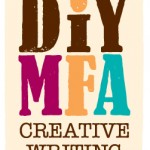Sooner or later, writers have to put their writing into context. This means tracking down published books that are similar to the WIP (i.e. competitive books) and reading them. Some writers like to do this sort of research as they’re working on their own book. Other writers prefer to hold off until they’ve been through a draft or two. Regardless of when you decide to start doing your research, it’s going to take time. And that’s time you won’t be spending writing, or revising, or querying, or… you get the picture.
Which brings me to the point of this post. How do we actually find these elusive books in the first place? And for that matter, how do we keep our reading lists from getting long and out of control? I’m a perfect example of the latter. Every time I hear of a book even remotely similar to my WIP, I have run out and read it. This is all well and good, but it does nothing to get my actual WIP written in the first place. The message here is to find a balance. Yes, research is important, but the key is to do it efficiently and effectively.
To that end, here’s a nifty trick I’ve discovered that has helped me speed up the search for competitive books. All you need is the internet and the title of (at least) one competitive book.
1) Go to Amazon.com and search for that one competitive book you’ve already found. If you don’t have the title of at least one book that’s similar to your WIP, try doing a keyword search. All you need is to find one book and then the search becomes much easier.
2) Scroll down to where it says “Customers who bought this book also bought…” Browse through the books listed and make a note of any that might fit within the context of your WIP (similar themes, genre, target audience, etc.)
3) Use the “Look Inside” feature on Amazon or search for the titles you’ve noted using Google books. Read a few pages. An alternative is to go to a bookstore or library with your list and browse the shelves. After all, you want to make sure the books you’ve put on your list are actually going to be useful.
4) Now read ’em.
This trick might seem like a no-brainer to all you super-efficient genius researchers out there, but believe it or not it took me forever to figure out. In case anyone else out there has been beating their heads against the wall (like I did for so long) I figured I’d pass on this trick. Sure, this search tool isn’t foolproof and nothing beats the tried-and-true method of getting recommendations from a librarian or knowledgeable bookseller. But in a pinch, this saves time. And as I see it, that just means more time for writing.
On a separate note: Don’t forget to check out my contest! It’s open until Saturday.










 Call me Gabi (pronounced gah-BEE). I'm a writer, freelance teacher, and a lover of books and words. I'm also the instigator of DIY MFA. iggi's my sidekick, but he thinks he's the brains behind this operation.
Call me Gabi (pronounced gah-BEE). I'm a writer, freelance teacher, and a lover of books and words. I'm also the instigator of DIY MFA. iggi's my sidekick, but he thinks he's the brains behind this operation.
 Body Image in Literature
Body Image in Literature YA Cafe: Interview with Julia Mayer
YA Cafe: Interview with Julia Mayer YA Cafe: New and Improved!
YA Cafe: New and Improved! The new face of DIY MFA!
The new face of DIY MFA!